Key takeaways:
- Creating a safe and trusting environment encourages open dialogue and enhances collaboration among participants.
- Utilizing techniques like small group discussions, collaborative technology, and regular feedback can significantly increase engagement and creativity in workshops.
- The physical setup, such as seating arrangements and workshop atmosphere, directly affects participant interaction and collaboration.
- Continuous improvement through participant feedback and goal alignment is essential for fostering effective collaboration in future workshops.
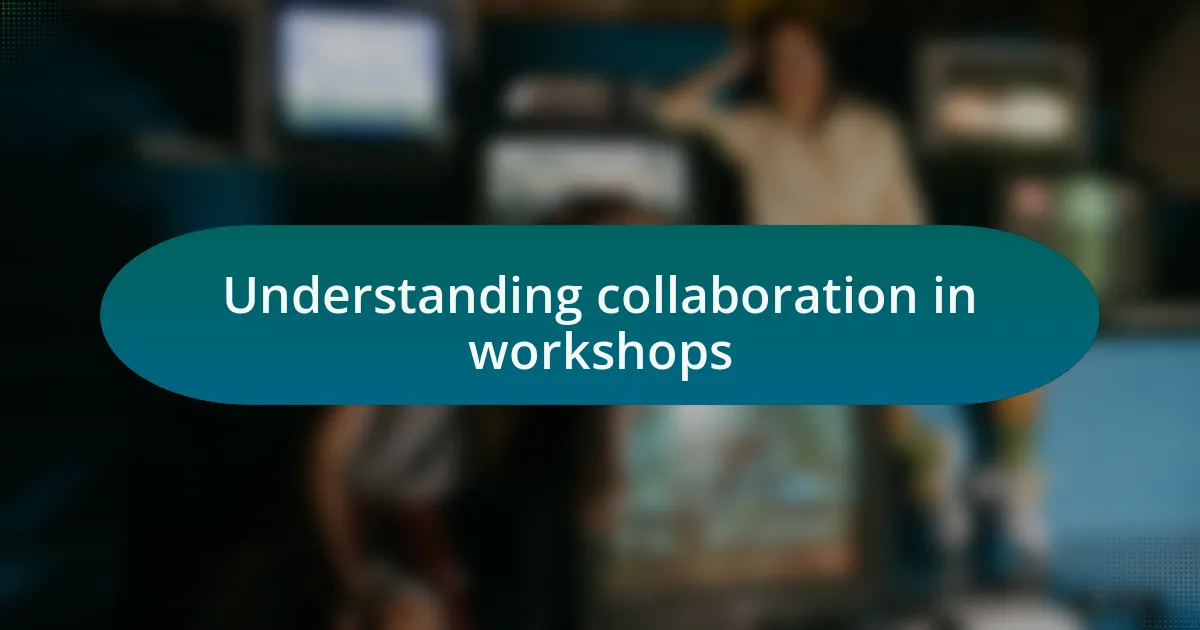
Understanding collaboration in workshops
Collaboration in workshops transcends mere teamwork; it’s about fostering an environment where diverse ideas can flourish. I remember a particular workshop where participants seemed hesitant to share their thoughts initially. However, once I encouraged an open dialogue, I could see the shift—people started bouncing ideas off one another, igniting a spark of creativity that truly transformed the session. How often do we underestimate the power of creating that safe space?
It’s crucial to recognize that collaboration relies heavily on trust. In one of my earlier workshops, I shared a vulnerability of my own, which led others to do the same. This emotional sharing opened the floodgates for genuine collaboration. When participants feel safe enough to express their thoughts without judgment, the collective output becomes richer and more innovative. What if we could cultivate that atmosphere in every workshop?
Moreover, understanding collaboration means appreciating the various roles people can play. Some thrive in leadership roles, while others shine as supportive team members. I vividly recall a participant who usually took a backseat but, when encouraged to share their unique perspective, revealed a solution that the group had overlooked. This experience has taught me that collaboration is about harnessing everyone’s strengths and recognizing that every voice has value. Are we truly listening to all the voices in our workshops?
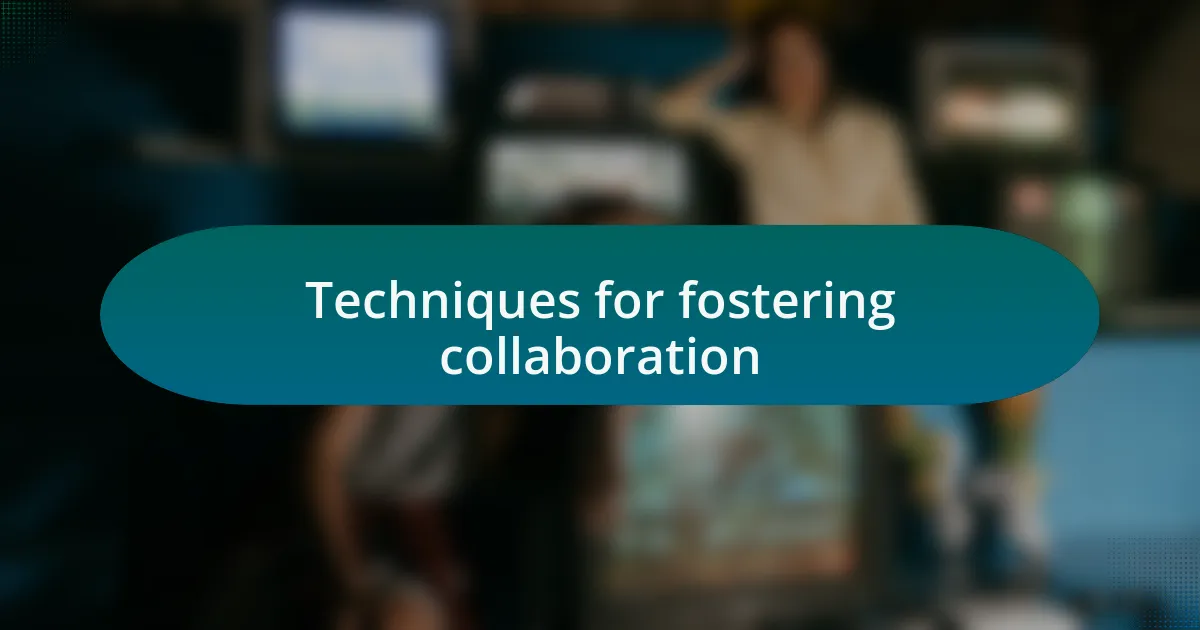
Techniques for fostering collaboration
Creating activities that engage participants is a powerful way to foster collaboration. In a workshop I once facilitated, we broke the participants into small groups for brainstorming sessions. Each group was assigned a different perspective, encouraging them to think outside their usual confines. I watched as group dynamics shifted—the way participants collaborated transformed simply by sharing their thoughts in a smaller setting. Isn’t it fascinating how a little structure can unlock creativity?
Another technique I’ve found effective is using collaborative technology tools. In one session, I introduced a shared online whiteboard. Participants contributed in real-time, adding their thoughts and ideas visually. This method was not just about the ideas generated but also about the energy in the room; seeing their thoughts materialize drove more engagement and interaction among participants. Why do we often overlook the impact of technology in our workshops?
Lastly, providing regular feedback during the collaboration process is vital. I recall a workshop where I implemented quick “pulse checks” every twenty minutes, asking teams to share what they felt was working and what wasn’t. This simple intervention significantly increased the sense of ownership over the project and built a stronger connection among participants. Have you considered how feedback can elevate collaboration?

Setting the right environment
Creating an inviting atmosphere is crucial for collaboration during workshops. I’ve found that even the arrangement of chairs can influence interactions. In one workshop, I opted for a circular seating arrangement instead of traditional rows. The moment participants settled in, I could sense the difference—smiles were exchanged, and conversations flowed more freely. It’s amazing how a simple change can break down barriers and create a sense of community.
Another vital aspect is the lighting and decor of the workspace. I once facilitated a session in a room filled with natural light and decorated with vibrant artwork. The energy was palpable; participants seemed more relaxed and open to sharing their ideas. Have you ever noticed how the environment around you affects your mindset? I often remind myself that creating a space that feels dynamic and alive can spark creativity and dialogue.
Lastly, I’ve learned the importance of background music in setting the right mood. During one workshop, I played soft instrumental music as participants arrived. This subtle touch eased any initial tension and made for a seamless transition into discussion. It’s intriguing how sensory elements can influence our experiences. How often do we consider these details in our own workshops? By paying attention to the environment, we cultivate a space where collaboration can truly thrive.
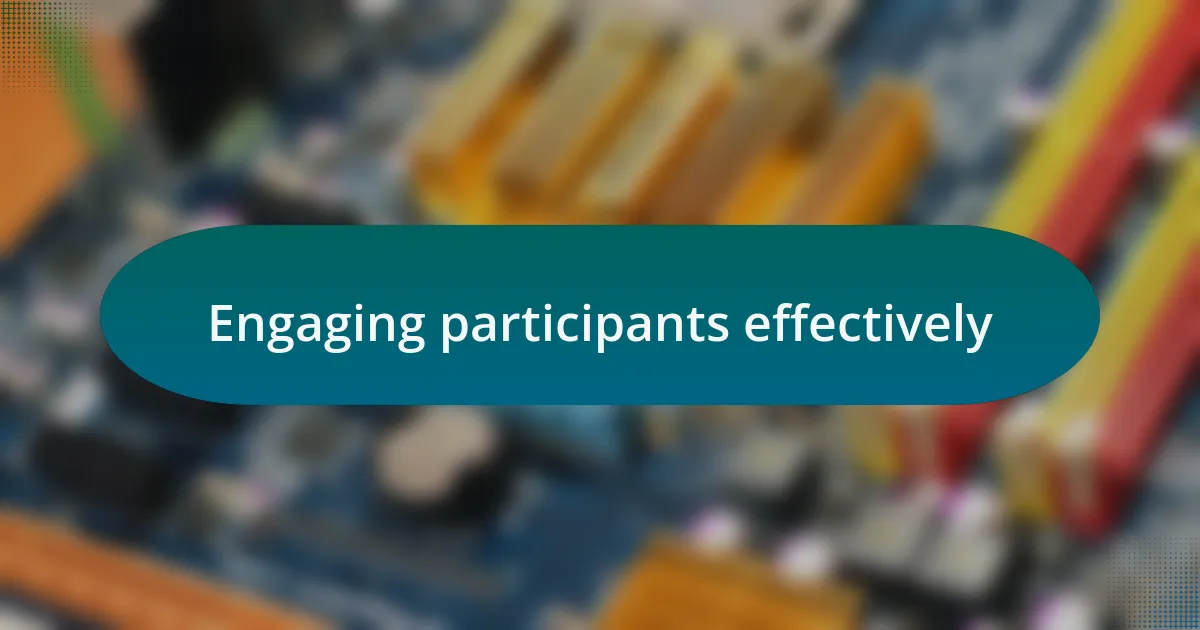
Engaging participants effectively
To engage participants effectively, I always prioritize icebreakers that break down social barriers. I recall a workshop where I used a “Two Truths and a Lie” activity. It was fascinating to see the initial hesitance dissolve as participants laughed and shared surprising facts about themselves. Have you ever noticed how quickly laughter brings people together? That shared moment of vulnerability can set a collaborative tone from the very start.
Active participation is another crucial part of engagement. In one memorable session, I implemented small group discussions with rotating partnerships. This dynamic allowed participants to share their perspectives with different voices, fostering a rich tapestry of ideas. I could feel the energy shift as those diverse conversations blossomed. Isn’t it remarkable how fresh perspectives can ignite creativity? It’s clear to me that when participants feel heard and valued, they become more invested in the outcomes.
Finally, I emphasize the importance of feedback loops throughout the workshop. During a recent event, I used real-time polling to gauge understanding and gather opinions, which sparked enlightening dialogues. Witnessing participants’ excitement when their input shaped the discussion was truly rewarding. Have you experienced the shift in energy when participants realize their voices matter? This process not only makes participants feel involved but also enhances the collaborative ethos we aim to create together.
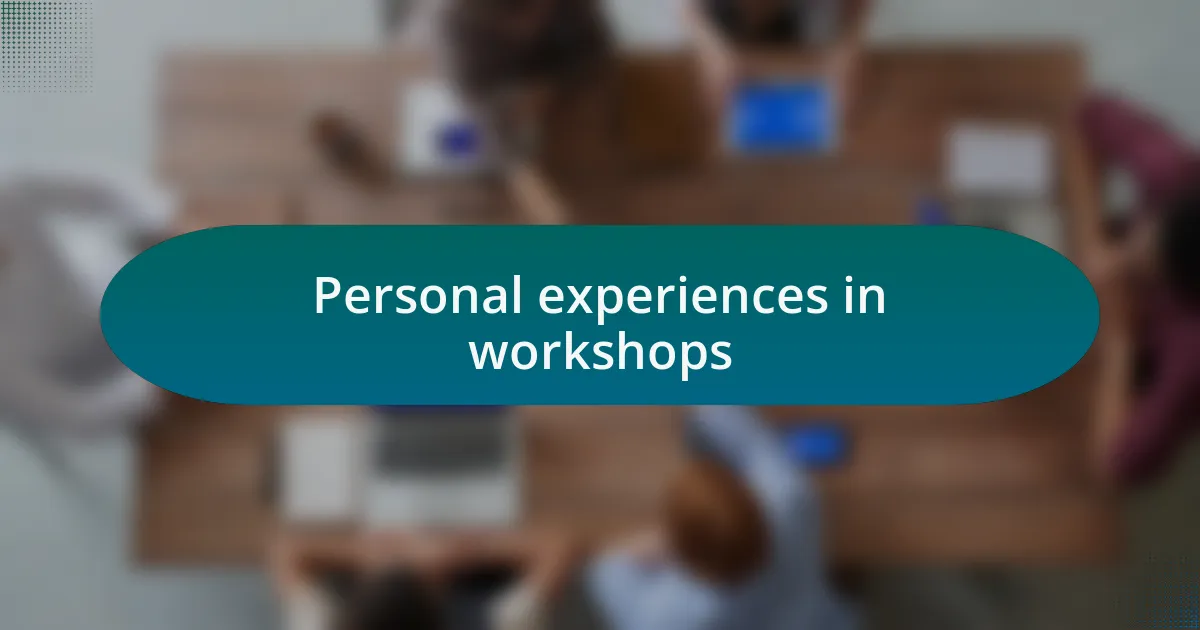
Personal experiences in workshops
In my experience, the layout and setup of a workshop can greatly influence collaboration. At one event, I arranged the seating in a circular formation instead of traditional rows. It was incredible to see how this simple change altered the dynamics. Participants began to engage more freely, maintaining eye contact and leaning in as if the conversation was a shared venture. Have you ever noticed how physical arrangement can shift the energy in a room?
Another unforgettable experience came when I introduced ‘collaboration stations’ — areas where participants could brainstorm together on different topics. I saw firsthand how this encouraged ownership of ideas, as people took turns leading discussions while others contributed thoughts. It was like watching a symphony where each instrument played harmoniously. The joy of witnessing their enthusiasm as they tackled challenges collectively was profound. Isn’t it powerful to see individuals transform into a cohesive unit when given the right environment?
On one occasion, I invited a past participant to share their success story related to the workshop’s theme. The atmosphere transformed, instantly uplifting the group. It was as if everyone absorbed a shot of motivation. This experience reaffirmed my belief that real-world connections can have a lasting impact. Have you ever felt inspired by someone who was once in your shoes? That moment was a reminder of the importance of creating opportunities for participants not just to learn, but to inspire one another.
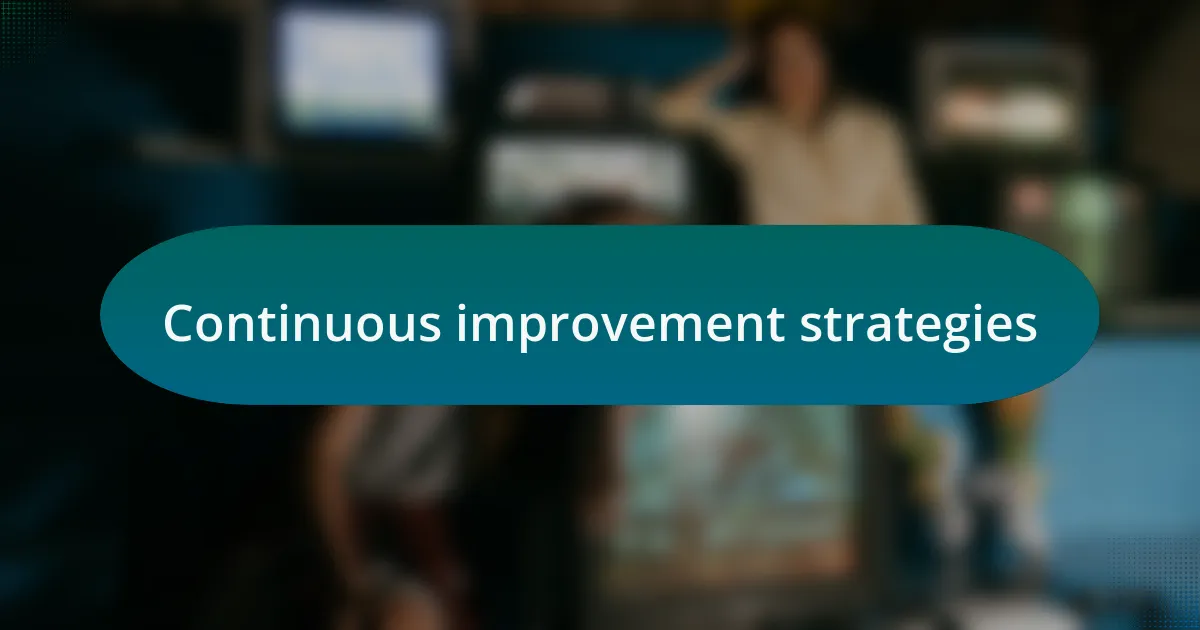
Continuous improvement strategies
Continuous improvement is an essential part of fostering collaboration in workshops. I’ve found that after each session, holding a debriefing meeting can reveal insights that we might miss during the hustle and bustle. One time, we spent just 20 minutes discussing what worked and what didn’t, and it was enlightening. I was surprised to learn that a simple change in our feedback mechanism could potentially enhance future workshops. Isn’t it fascinating how small adjustments can sometimes create a ripple effect?
Additionally, I’ve started incorporating participant feedback through anonymous surveys after workshops. The responses have been invaluable. Once, a participant mentioned that they wanted more hands-on activities, and I was able to integrate that into our next session. Seeing those who once felt hesitant to engage become active participants was incredibly rewarding. Isn’t it amazing how listening to your audience can cultivate a sense of belonging?
Another strategy I’ve implemented is revisiting workshop goals regularly. I like to check in with myself and the team to ensure we’re still aligned with our objectives. During one of these reflections, we realized that we had strayed from our original intention of inclusivity. Making adjustments to bring everyone back into the fold not only reignited our mission but also fostered deeper connections among participants. Have you ever experienced the shift in energy when a group aligns around a shared purpose?